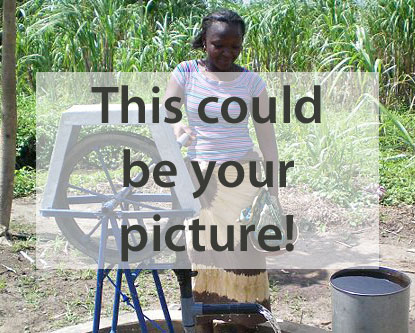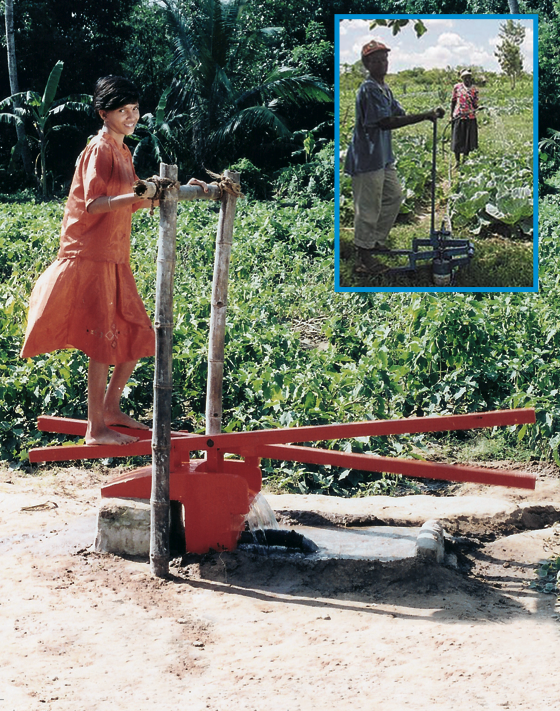Difference between revisions of "Treadle pump"
| Line 12: | Line 12: | ||
[[Image:Treadle_pump.PNG|thumb|right|150px| The bamboo version of the treadle pump used in Bangladesh ]] | [[Image:Treadle_pump.PNG|thumb|right|150px| The bamboo version of the treadle pump used in Bangladesh ]] | ||
| − | |||
| − | |||
| − | |||
| − | |||
| − | |||
| − | |||
| − | |||
| − | |||
| − | |||
| + | {{procontable | pro= | ||
| + | - Cost effective <br> | ||
| + | - Produced in local workshops <br> | ||
| + | | con= | ||
| + | }} | ||
== Capacity == | == Capacity == | ||
Revision as of 14:45, 29 April 2009
| |
The treadle pump for irrigation was developed in the late 1970's in Bangladesh. After wide-scale promotion by IDE International Development Enterprise, they are now being produced in 300 local workshops and used by more than one million poor rural families that otherwise could not have afforded an irrigation pump. With this technology, many families have increased their income. Some farmers who started with this pedal pump have now bought a motorized pump.
The treadle pump is cost effective; it cost US$ 20 in Bangladesh and generates US$ 100 or more per year. Together, these pumps add over US$ 100 million every year to the GNP of Bangladesh. Production and sales are now sustainable without any external aid.
The treadle pump is also being promoted in Africa where it is installed by organisations like Kickstart (former Approtec) and EW Enterprise Works. Models of the treadle pump like the Moneymaker and the Soka-pump are now widely used for small-scale "spray" irrigation.
| Advantages | Disadvantages/limitations |
|---|---|
| - Cost effective - Produced in local workshops |
Capacity
100 litres / min from 4 meters depth.
Costs
- US$ 20 in Bangladesh.
- US$ 50-80 in Africa.
Applying conditions
- Numbers: 1.3 million in Asia, 35,000 in Eastern Africa.
- Application Mainly irrigation from wells 1-7 meters deep.
- Cost of introduction: Variable. US$ 20,000 per project, including training, engineering and first production.
Movie

|
External links
- Asia www.ideorg.org
- Africa www.fao.org/iptrid
- East Africa www.kickstart.org
- East and West Africa www.enterpriseworks.org
- India ide-india.org/ide/treadlepump.shtml

